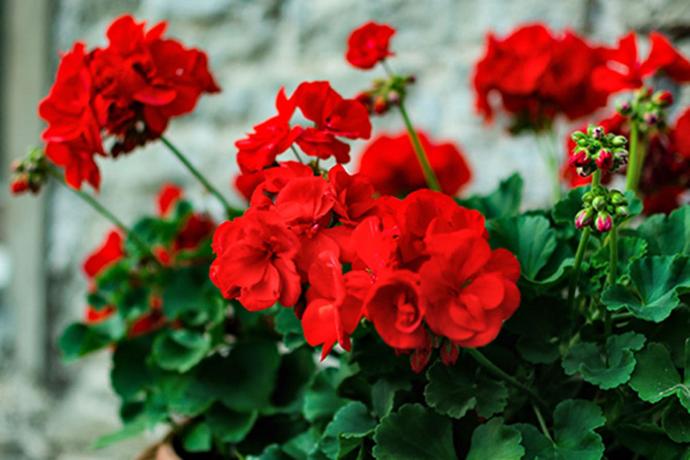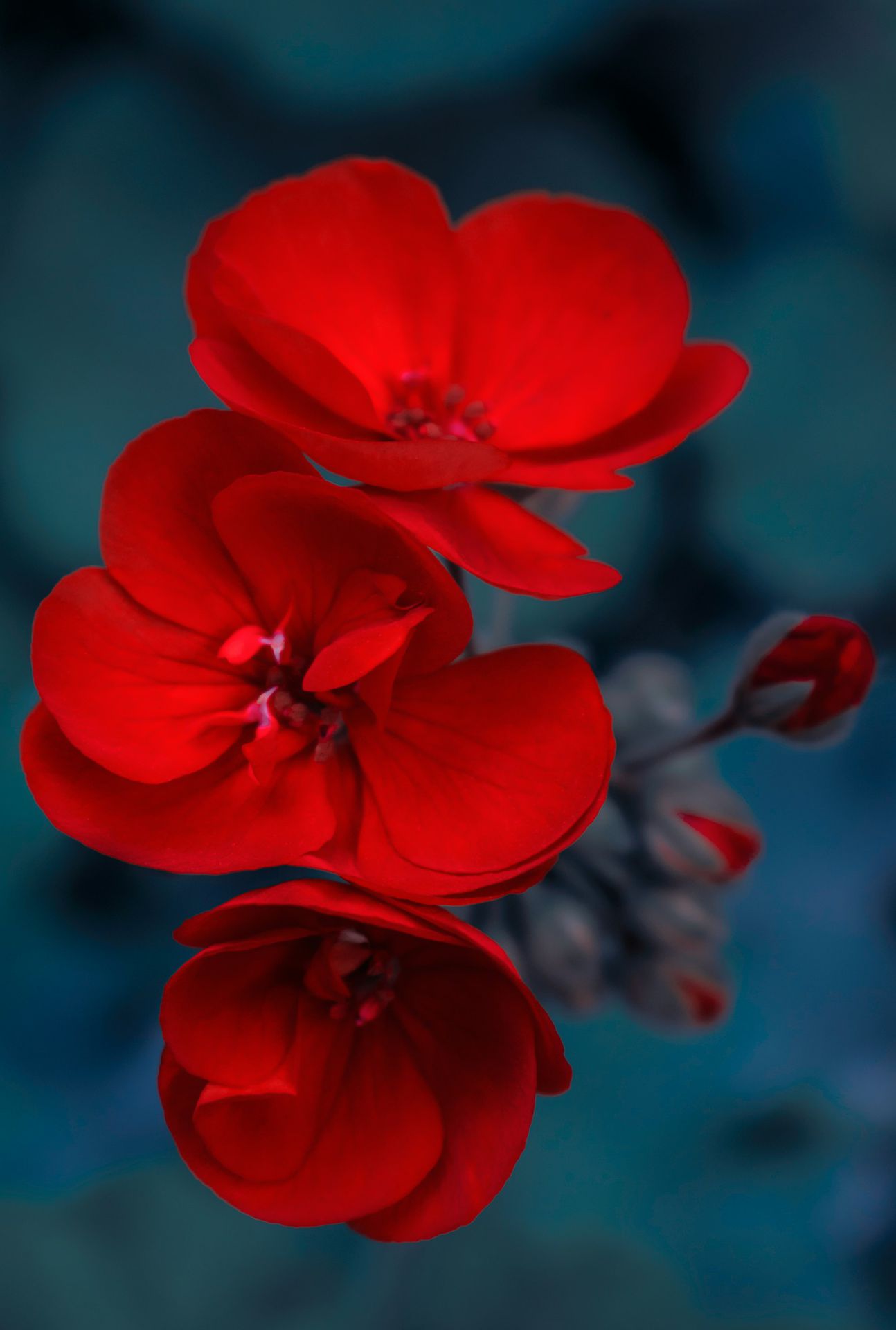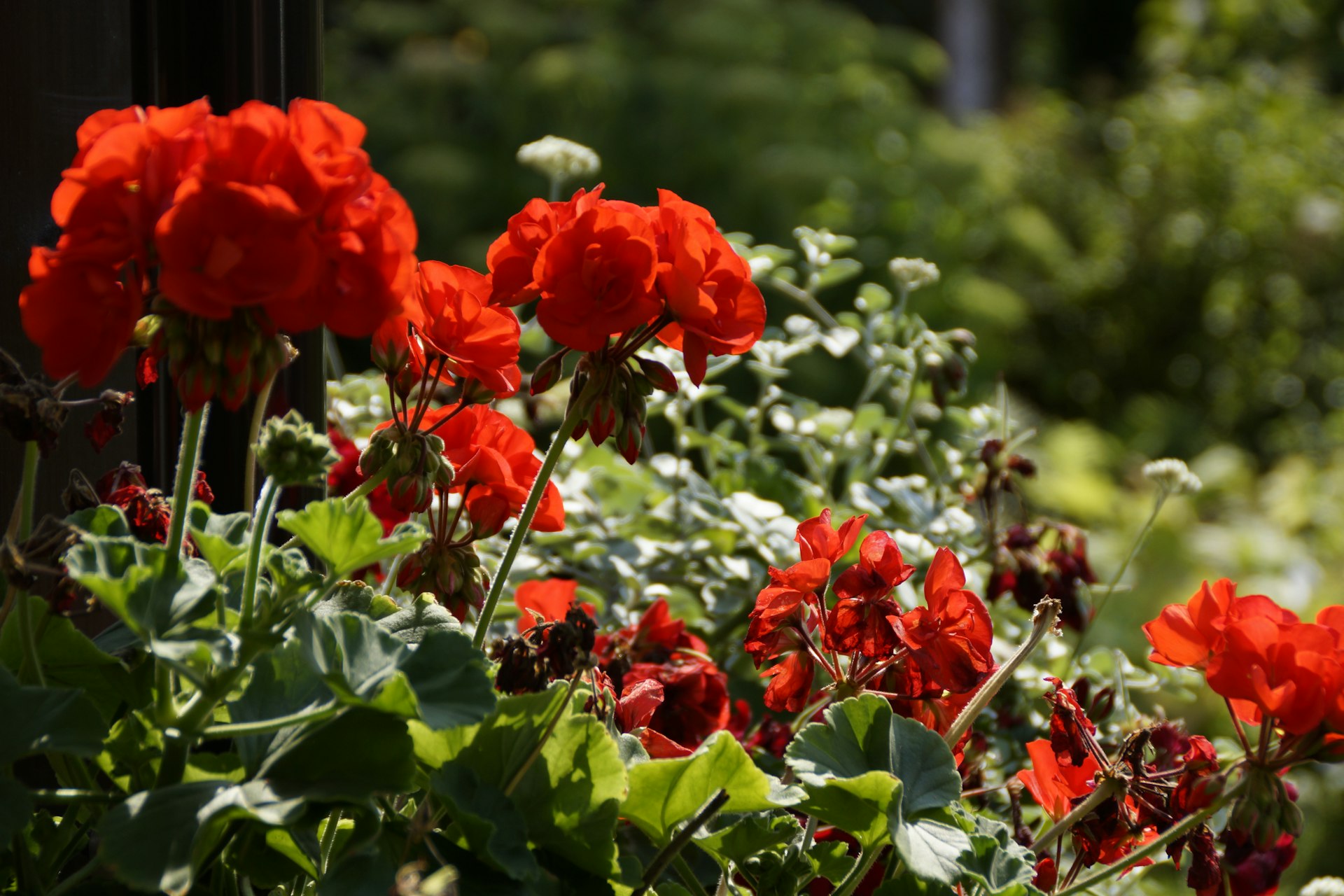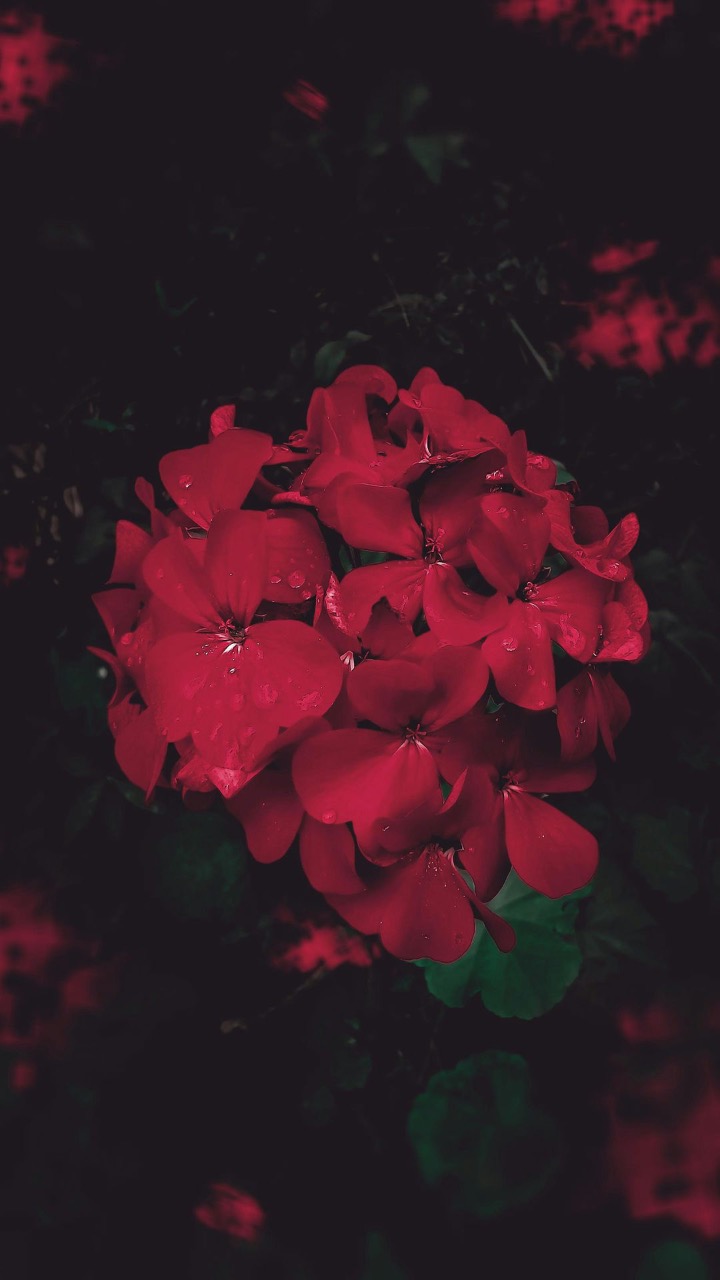Geranium Plant
Geraniums, or Pelargoniums, are versatile outdoor plants. Plant in well-draining soil with full sun to partial shade. Water consistently and deadhead spent flowers for continuous blooming. Pruning helps maintain a compact and bushy appearance.

Habit
Perennial
Height
0.3 to 0.6 m
Growth
Moderate
Soil
Well Drained, Loamy
Shade
Full Sun to partial shade
Moisture
Moist
Edible
No
Medicinal
No
Origin
South Africa
Climatic Condition
Subtropical, Temperate
Temperature (°)
15°C to 25°
Humidity (%)
50% to 60%
Potting media
40% Loam, 40% Sand, 20% Compost
Fertilizers
Organic Fertilizer
Watering
Regular watering
Plant Weight
0.3 to 0.5 kg
Flowering Time
Spring to Summer
Soil Ph level
5.5 to 6.5
Water Ph level
6.0 to 6.5
Soil EC
0.4 to 0.6 mS/cm
Yield Per Plant
Ornamental, medicinal
NPK ratio
10:10:10
life Span
2 to 3 years
Health Benefits
Ornamental, Stress Relief
Suggested Grow Media or Potting Mix ?
50% peat, 25% compost, 25% sand
Suggested Fertigation/Fertilizers
Fertilize every 2 weeks with a balanced fertilizer.
Common Diseases and Remedies
Wilt , leaf blight
Yellowing of the leaves , and later turning to brown, drooping of leaves
Uprooted infected plants.
HEALTH BENEFITS
- Geranium essential oil has antibacterial and anti-inflammatory benefits.
- Used in skincare to treat acne and wounds.
- Helps in relaxation and stress relief.
What Is A Geranium Plants?
Geraniums are popular flowering plants known for their beautiful flowers and unique foliage. They come in many colors and are often used as garden or potted plants.

What Are The Different types of Geraniums?
Geraniums come in many species and are generally divided into two main groups: geraniums and pelargoniums. Geraniums include banded geraniums, climbing geraniums, and scented geraniums, while geraniums include true geraniums, such as various cranebill species. Each type has its own unique characteristics and uses.
1.Zonal geraniums:
zonal geraniums are the colorful mainstay of many summer gardens. The name of the dark colored area on the leaf that can be seen in some plants and less in others. They have light to dark green, usually dark, rounded leaves, fleshy stems, and a pungent odor. Its flowers grow in clusters and may be single, semi-double or double. The flowers are red, purple, scarlet, white, orange and rarely yellow. Most colonies will grow up to 24 inches in height and width. Available in dwarf and small varieties from 5 to 8 inches
2.Ivy Geranium:
Ivy geranium (Pelargium peltatum) is a trailing plant that can spread up to 48 inches. They get their name from their resemblance to the lobed (sometimes pointed) leaves of the ivy (Hedera spp.) plant. The glossy, glossy green leaves are up to 3 inches in diameter. The flowers bloom singly or in groups of two flowers in red, pink, lavender, purple or white.
3.INTERSPECIFIC GERANIUMS:
This unique hybrid combines the best of striped geraniums and climbing geraniums. Pelargonium interspecific (Pelargonium interspecific) has large flowers with the characteristics of striped geraniums and the exuberant semi-stalking behavior of climbing geraniums. The plant blooms profusely and has good heat.
4.Regal or Martha Washington Geranium:
Regal or Martha Washington geranium (Pelargonium vulgaris) produces large clusters of red, pink, purple, orange, white or red-black flowers, some with attractive patterns. Medium-green leaves are rounded, sometimes lobed or part of the blade. Height is 12 to 48 inches.
5.SCENTED-LEAF GERANIUMS:
Geranium emits its scent when its leaves are brushed or crushed. Its medium green leaves are sometimes variegated and its flowers bloom in lavender, pink, purple or white. There are more than 140 species with different scents, such as P. headum (rose), P. crispum (lemon), P. denticulatum (pine), P. fragrans (apple), P. fragrans (apple), P. . . denticulatum (lime), P. denticulatum (pine). gravolens (rose), P.grossularoides (coconut), P.odoratissimum (apple) and P.tomentosum (mint). The lemon scented variety can be used as a mosquito repellent plant. The variety of scented leaves can be enormous when allowed to grow in soil.
6.Angel Geranium:
Angel Geranium (Pelargium x) is a cross between Pelargium and Imperial Pelargonium; They are pink, purple, pink or white patterned flowers. Medium green leaves are round, wrinkled and sometimes fragrant. The plant has a bushy habit, reaching heights of 9 to 36 inches.

How to Care for Geraniums:
1.Location:
Geraniums thrive in good soil and prefer full sun for at least 6 hours per day. Make sure the soil is moist at all times but not waterlogged. Water from the bottom to prevent fungal problems. Fertilize every 4-6 weeks during the growing season. Prune regularly to encourage bushier growth. In cold weather, move potted geraniums indoors before frost. Watch out for pests such as aphids and treat them immediately.
2.sunshine :
To care for Sunny Geraniums, provide well-drained soil, place in a sunny location and water when the topsoil is dry. Deadhead flowers bloom regularly, fertilize every 4-6 weeks during the growing season, and protect from frost during cold weather. Prune back to good shape and remove damaged leaves for good growth.
3. Soil:
To care for your geranium soil, make sure the soil drains well and apply fertilizer evenly throughout the growing season. Water when the soil is dry and avoid overwatering to prevent root rot. Mulch helps retain moisture. Prune dead or yellowed leaves regularly and repot every 2-3 years to replenish the soil and encourage healthy growth.
4.Hydration:
To monitor your geranium's moisture level, water the plant when the top soil is dry. Make sure the soil is well-drained to prevent water from coming up through the roots. Water at the base, avoid leaves. Adjust the frequency according to climate and pot size. Overwatering can cause root rot, so allow the soil to dry out from water.

5. Nourishment :
Geraniums grow in well-drained soil and full sun. Water them when the soil is dry, but avoid overwatering. Apply water evenly every 4-6 weeks throughout the growing season. Deadheads bloom regularly to encourage continuous blooming. Prune properly and remove leggy growth. Protect them from frost and consider bringing them indoors during the cold season if necessary.
6.Issues:
To care for geraniums, provide well-drained soil, water when the topsoil dries, and place in a location that receives 6-8 hours of sunlight. Deadhead Blooms To encourage more blooms, fertilize every 4-6 weeks during the growing season. Watch for pests such as aphids or spider mites and deal with them immediately. Reduce watering in winter and protect from frost. Regular pruning helps maintain a compact shape.
What Are The Benefits of geranium:
Geranium has many benefits, such as being a good insecticide, having antibacterial properties and helping the skin heal by balancing oil. Their sweet scent also makes them popular in aromatherapy.

FAQ’s About Growing Geranium Plants
1.What are the best growing conditions for geraniums?
Geraniums thrive in well-drained soil with a slightly acidic to moderate pH (about 6.0-7.5). They like full sun but can also tolerate partial shade. Keep the soil moist but not waterlogged and make sure there is good air circulation around the plant. Regular pruning will encourage continued flowering and balanced fertilizer will be used throughout the growing season. Cropping helps maintain a compact image. Also protect geraniums from frost because they are sensitive to cold.
2.What are the nutritional benefits of consuming geraniums?
Geraniums are mostly ornamental plants and although they are not often eaten due to their nutritional benefits, some people use them as herbal medicine, tea or salad. However, it is worth noting that geraniums contain very few nutrients and are not a primary source of nutrients. If you are looking for a healthy diet, it is recommended that you focus on a healthy diet that includes a variety of fruits, vegetables and other nutritious foods.
3.What are the uses of geranium?
Geranium has many uses including ornamental gardening, aromatherapy essential oil extraction and medicinal use. This plant is known for its beautiful flowers in the garden, and its essential oil is used in perfumes and as an insecticide. In traditional medicine, geranium oil is considered antiseptic and anti-inflammatory and is sometimes used in skin care products. Some people also use geranium leaves in cooking, adding them to salads or tea for the fragrant flowers.
4.Can I grow geraniums indoors?
Yes, you can grow geraniums indoors. They thrive in well-drained soil, need light and should be watered when the top layer of soil dries. Indoor temperatures of 65-75°F (18-24°C) are ideal for growing geraniums.
5.How to propagate geraniums from seeds or cuttings?
To propagate geraniums from seeds, plant them in a well-drained seed starting mix, maintain moisture and provide indirect light. When the seedlings are large enough, transfer them to a pot. To cut, cut a 3-4 inch stem from a healthy geranium plant, remove the lower leaves and leave the tip of the hormone. Plant the cuttings in a mixture of potting soil and perlite or sand. Keep the soil constantly moist until roots form. Both parties benefit from a warm and bright environment. Patience is important because planting or root development may take several weeks.



